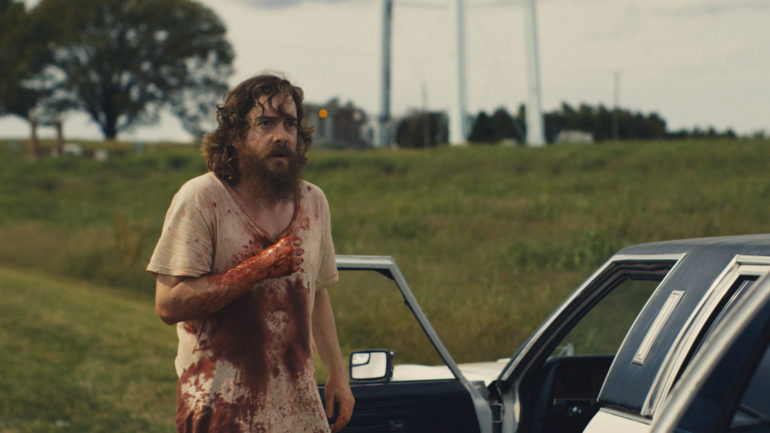Blue Ruin is one of those little films that could, an indie darling garnering enough festival cred to snatch a little attention from multiplex hangers-on. Ultimately, its tale of familial revenge is too familiar to transcend the genre, but Blue Ruin achieves a professionalism that belies some humble origins.
Kickstarter may be dominated/have been hijacked by more high-profile names, but Jeremy Saulnier’s second feature is a fine example of how to use crowd sourcing to its full potential. It only cost $35,000, but has the look and confidence of a film twenty times that price. It is efficient in its budget and its technique. It intrigues from the start, as we’re introduced to a homeless drifter named Dwight (Macon Blair). Living in a rusting heap of a car, Dwight lives a bearded bug-eyed existence until a police officer comes by to give him some bad news. A man is about to be released from prison for a crime against Dwight’s family. Initially, this is as much as we’re given, and for most of Blue Ruin specifics are refreshingly sparse. Revenge thrillers are often numbingly simple in their narrative, but the dearth of exposition allows the action to flow more smoothly. Plus, when we can’t know our protagonists motives for sure, tension can only build.
Dwight sets out to find the newly-paroled offender, only for things to end messily. Now covered in blood, some of it his own, he has to find refuge and defence as the tables are turned on the erstwhile hobo. As well worn as revenge plots are, Dwight is no mindless thug coasting on bloodlust. He doesn’t adapt well to weapons and stealth, despite some training from hunter pal Ben (Devin Ratray). He’s very much an everyman, unsure of his next move and fearful of the wrath he may bring down on him and his family. Blair’s performance makes the film; he sells the everyman angle. We may not be sure of his next move, but then neither is he.
Dwight’s fear feels all too real, and understandably so. The violence in Blue Ruin cuts close to the bone. Incidents involving crossbows and shotguns at close range leave their mark. Blue Ruin may not be innovative, but it does give pause to consider our attitudes to onscreen violence. The everyday settings and everyman characters make the violence and omnipotent weaponry a genuine source of threat. There are no bloodless bullet wounds here; the characters feel the consequences. For raising both awareness and tension in one fell swoop, Saulnier’s approach to action and violence merits praise, and necessitates plenty of audience forewarning.
As time moves on and Dwight sets himself up for a final showdown, the tension does start to bleed out. The plot twists become more predictable, but Blair and some claustrophobic direction keep us pinned down, aided by an occasional bloody outburst. Blue Ruin is no trailblazer in the narrative stakes, but it works excellently as a standalone potboiler and as a calling card for Saulnier and Blair. Marry them to a more innovative script and we’ll have something very special.

